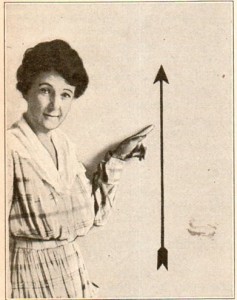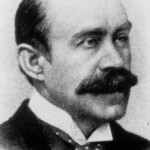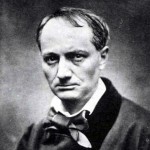This post is written on an Amtrak train careening from DC to NY.
Having just been at George Mason University where I gave a craft talk, a reading, and a talk about publishing, I offer the following:
“Craft” is not a word I use very much when I speak to myself about poetry. I don’t consider that I am crafting something, but rather that I am listening to something, allowing something, or at times, searching for something.
Of course I do craft, but very differently than I was taught to when I was in school. I don’t think about making “strong lines,” I don’t think of crating a sense of inevitability or closure in the poem. I don’t think of taking out “excess.” Rather, I think more as a dancer thinks about choreography. I think about density and lightness. I think about opening space up, or crowding it. Sometimes I consider moving more firmly forward, or stopping, or pausing. And I think about time.
Christina Battle, a video and film artist I have worked with, told me that she considers her work to be the “making of time.” It takes a lot of time, she once said, to make time.
One of the reasons, then, that we love to watch films is to allow our sense of time to be manipulated. To “get lost” in a film is to give over one’s (illusionary) control of time.
The physicists talk about the “arrow of time”—the fact that time moves only in one direction. They talk about this in terms of entropy, which increases over time: "We can make an omelet out of an egg, but not an egg out of an omelet," they say.

This arrow, moving ever forward, creates two very bad problems for us.
One is that we know death is coming, and we know that each moment is its own little death, and so we are always in a state of mourning, whether we acknowledge it or not. Goodbye to this, goodbye to that. The other, less dire but still prevalent problem is that our actual internal experience of time is not well figured by that arrow.
We don’t experience time as moving in a constant or smooth way. Rather, we experience it slowing down, speeding up, having dips and curves, sometimes getting stuck.
Theorists of art and poetry have long looked to the aesthetic experience as a way to address both of these problems.
It’s been said that poetry can reverse the movement of time—for when you get to the end of the line, you have to go back to the beginning again. “Our eyes darting from the end of one line to the beginning of another create a kind of instability in linear time,” says Chris Nealon reading J.H. Prynne. Or, says Agamben, the end of the line, its necessary enjambment, makes a hesitation, a pause, which defines the poem itself.
It has been said that poetry ruptures time—makes a hole in the weave of narrative we call a day or a life. This happens when language is so thick, so complex, that to read is to get caught in its traps and ruts. All those “little knots of impacted, concentrated, dense language: paradoxes, ambiguities, and indeterminacies; self-reference and repetition” writes Cathy Gallagher, “seem to cross back and forth over [themselves] and consequently to thwart forward movement.” Recurrence: more than a literary device: a refusal of directed velocity.
I want to think more about this by looking at two figures from the 19th century, Walter Pater and Charles Baudelaire


Here is this familiar moment from Pater’s conclusion to The Renaissance:
"We are all condamnés, as Victor Hugo says: we are all under sentence of death but with a sort of indefinite reprieve…we have an interval, and then our place knows no more. Some spend this interval in listlessness, some in high passion, the wisest, at least among 'the children of the world', in art and song. For our one chance lies in expanding that interval, in getting as many pulsations as possible into the given time…Art comes to you proposing frankly to give nothing but the highest quality to your moments as they pass, and simply for those moments' sake."
Pater notes this slipping away of experience, our inability to grasp or hold time, and looks to art as the way to expand time, to make space for more 'moments' or 'pulses'—more hints of an embodied life.
In “The Painter of Modern Life” (1863), Baudelaire praises Constantin Guys for his ability to capture the “contemporary social scene,” to elicit the viewer’s pleasure in the present simply for its “essential quality of being present.” And yet, for Baudelaire, immersion in sensation is not simply naive or indulgent. As Baudelaire emphasizes, attunement to the passing moment is, for the artist, simultaneously attunement to the “eternal” that lies within that moment in its “historical envelope.”
“Modernity is the transient, the fleeting, the contingent; it is one half of art, the other being the-eternal and the immovable.”
We want art (or he wants art) to two things at once: first to “capture” the present, then by doing so, to open us into timelessness—endlessness—no death. Time redeemed.
When a poem lands us in the present, or seems to get in the way of "time's arrow" by way of the end of the line, by way of the little bits of gnarled or folded language, or by way of repetition—it rescues us. We can think of this as “redemption” in a non-religious sense – as a "buying back," a "gaining back" of time, which would otherwise be lost.
Now this is a very tall order and might seem incredibly far from questions of “craft.” But in fact, when I think about crafting or making, I want to know why I’m doing it. I want to have some sense of charge behind the desire to make something in a particular way, since in my view, anything at all is possible. There are no rules in art, no rules in poetry—there is no reason you should write in any particular way—no reason to justify left, no reason to write a book, no reason to break a line after four beats, five, seven, or twenty. No reason to mess up your syntax, no reason not to. Unless you HAVE a reason—and though that reason might seem incredibly grand, or even far too demanding, that reason – internally motivated, and for some of us absolutely forceful—will drive "craft."
I could have focused on any number of techniques—any number of ways that a poem can play with time. I’ve chosen repetition—because I’m interested in it, but also because it’s the guiding strategy in some of the poems I most want to share with you. And if I had time:
Hopkins, Christensen, and Lisa Robertson. Speeding through time, bumping through space— light flickering across the screen. I'll stop there.
Julie Carr is the author of ten books of poetry and prose, including Real Life: An Installation (Omindawn...
Read Full Biography

